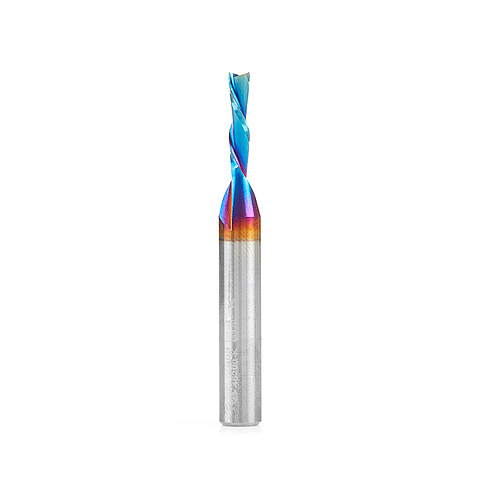I’ve had more trouble with “stringy” woods, the strings can do evil things like wrap around the bit and causing weirdness that way, or tear out.
So I’ve had my machine for almost two years now, and I’ve learned a lot about tuning it during that time… and I’ve had times where my toolmarks where very distinct, but I’ve managed to be able to basically have near zero now (most of the time, sometimes things go out of whack)
First of all, if you don’t have one of those little square digital levels yet (https://smile.amazon.com/gp/product/B0797R51WX or similar, there’s dozens, they’re all about the same as far as I can tell), get one… they’re not expensive and extremely useful.
With one of these little squares, you can set it on your wasteboard and make that your zero for the level… (or do what I did, and make sure the wasteboard is level itself)
Then you can use that square to make sure the X beam is level (and if not, adjust it until it is with the screws on the sides)
and once the X beam is level, you can use the square to make sure the body of your router is square to the wasteboard (e.g. 90/270) degrees, and adjust the Z carriage until it is.
(I also have a “big” level, but the nice thing about these little squares is that they nicely fit underneath things and you can use them to measure the router body)
Also I have learned to make sure that there is no wiggle in the collet of the router (that’s an indication that one of the V wheels is loose. A loose V-wheel will cause these ridges all by itself, so even before you try squaring, make sure you have no loose V-wheels)
And the last thing I had to learn the hard way is to make sure the work holding is SOLID. I’ve had wood warp on me while I was cutting and that also gives very weird marks. I’ve also had my dust collector brushes do evil things that also led to similarly weird marks (sadly I had that happen today)
So once the machine is square, you’ve taken care of “static” ridges.
But there’s also “deflection”, which is more or less proportional with the forces on the machine as it moves through the wood. Higher RPM, slower feedrate, shallower depth of cut and less stepover all reduce forces. As does having a nice sharp bit.
Reducing stepover works in two ways, it reduces the forces but in addition, if your machine is not 100.00000% square, it reduces the distance between these marks, and by that, it also reduces the depth of them (to exaggerate, think as if your bit was cutting parallel passes under a sideways 45 degree angle… by halving the distance between the passes, you would also reduce the depth of the grooves that the angle causes)
having said all this, I just cut some pockets in cherry with an 1/8" downcut bit with mostly standard settings (40 ipm feedrate, 50% stepover, 0.039" DOC) and there were just about no marks. My last pass ended up at 0.01" or so, that worked out well 
I knew I was going to put some paint in the pocket, otherwise I’d have likely done the “do the normal cut 0.01” higher, and then a cut with smaller stepover at full depth" thing… but even without the paint it might not have been needed.
If you want to go super advanced there are tools to make the feedrate more dynamic, to limit forces even more and keep them more constant… (think of this as post-processing the carbide create output)


